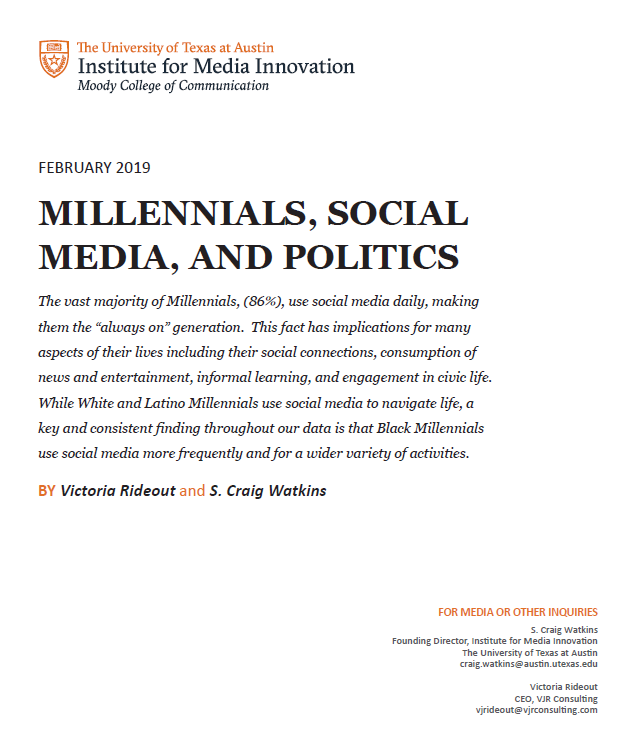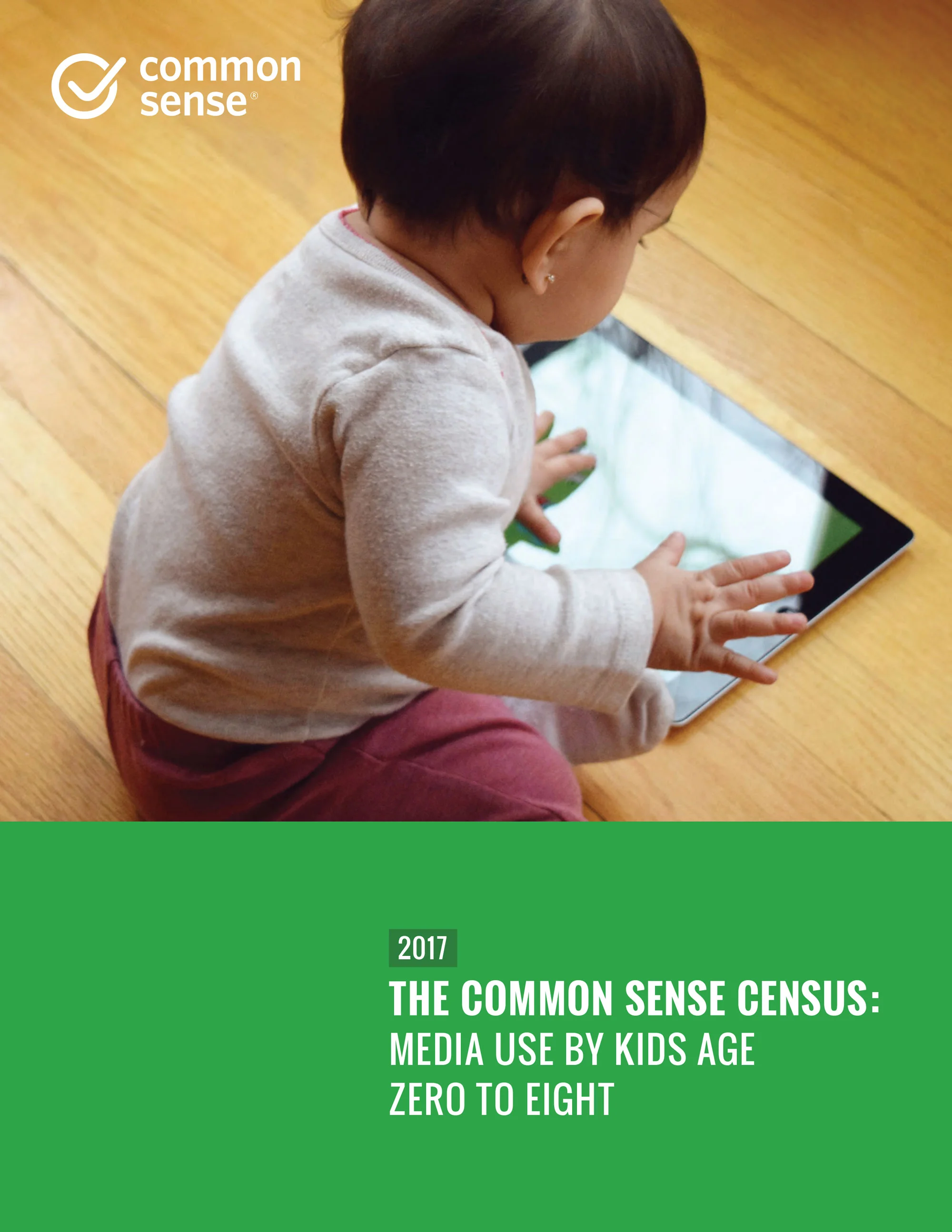Featured Work
This research compares screen use among 8- to 18-year-olds in 2019 with screen use in 2021, documenting changes in media use patterns during the pandemic.
This survey gives voice to young people’s experiences using social media and other digital health tools to promote their well-being. It includes extensive open-ended questions, and compares findings to a 2018 baseline survey.
This probability-based telephone survey of more than 1,000 lower-income parents documents the importance of digital equity during remote learning.
This survey explores how young people have used online resources during COVID for socialization, informal learning, and creative expression.
This report presents the results of a nationally-representative survey of more than 1,600 U.S. 8- to 18-year-olds, about their use of media. The report tracks changes in tweens’ and teens’ media behaviors between 2015 and 2019. Topics include young people’s enjoyment of various types of media activities, how frequently they engage in those activities, and how much time they spend doing so. The survey addresses all types of media: from reading books in print to listening to music to using social media to playing video games.
As social media evolves, we now see the diversity of ways it matters in young people’s lives: for informal learning, entertainment, access to news and information, participating in civic and political life, and to connect to people with whom they share common interests. The vast majority of Millennials, (86%), use social media daily, making them the “always on” generation. This fact has implications for many aspects of their lives including their social connections, consumption of news and entertainment, informal learning, and engagement in civic life. While White and Latino Millennials use social media to navigate life, a key and consistent finding throughout this study from Vicky Rideout and the University of Texas’s S. Craig Watkins is that Black Millennials use social media more frequently and for a wider variety of activities.
The complexity of social media’s role in young people’s lives may frustrate those looking for easy answers or simplistic solutions. But it is a reality that this survey has made abundantly clear.” Read the new survey VJR Consulting did for Common Sense Media, tracking trends in teen social media use from 2012 to 2018. The survey includes data about how often US teens use social media; specific actions they take (active vs. passive use); when they do or don’t take breaks from social media; how often they encounter racist and sexist content online; and whether social media makes them feel better or worse about themselves. The survey explores the relationship of social media use with teens’ social and emotional well-being, including a special focus on more vulnerable teens.
This nationally representative probability survey of 14- to 22-year-olds sheds important new light on the relationship between social media use and adolescent depression. The survey reveals that teens and young adults are making extensive use of the internet, social media, and mobile apps to help address their depression and anxiety. In addition, young people suffering from depression or anxiety have diverse responses to social media – for some, it is an important lifeline to support and human connection, while for others it just reinforces negative emotions. Many young people exhibit a high degree of 'agency' about how they use social media - consciously curating their feeds for inspiration and support, or staying off social media entirely during tough times.
We surveyed more than 1,400 parents to document the amount of time children spend engaged in various media activities, as well as their access to and use of media devices. The survey is the third in a series of tracking studies measuring changes over time. Media activities include watching TV and online videos, playing video games, listening to music, reading, and other digital activities. Devices include television, smartphones, tablets, computers, e-books, and video game players - and we even look at the newest trends such as Virtual Reality, virtual assistants (think Siri or Alexa), and the "internet of toys."
Funded by the Gates Foundation, this study surveyed a nationally representative sample of more than 1,000 African-American teen-parent dyads, on attitudes toward and use of computers and other digital technology. Our conclusion? "The shortage of young African Americans going into tech or STEM fields does not appear to be due to a lack of interest in, enjoyment of, or confidence about using computers. African American youth enjoy learning about new technology, they enjoy using computers, and they have done a lot with computers. But they have a great unmet interest in learning more about computers. There is no lack of aspiration on young people's parts - but the adults, educators, and policymakers in their lives now need to do their part to build the environments that will catalyze those aspirations."










